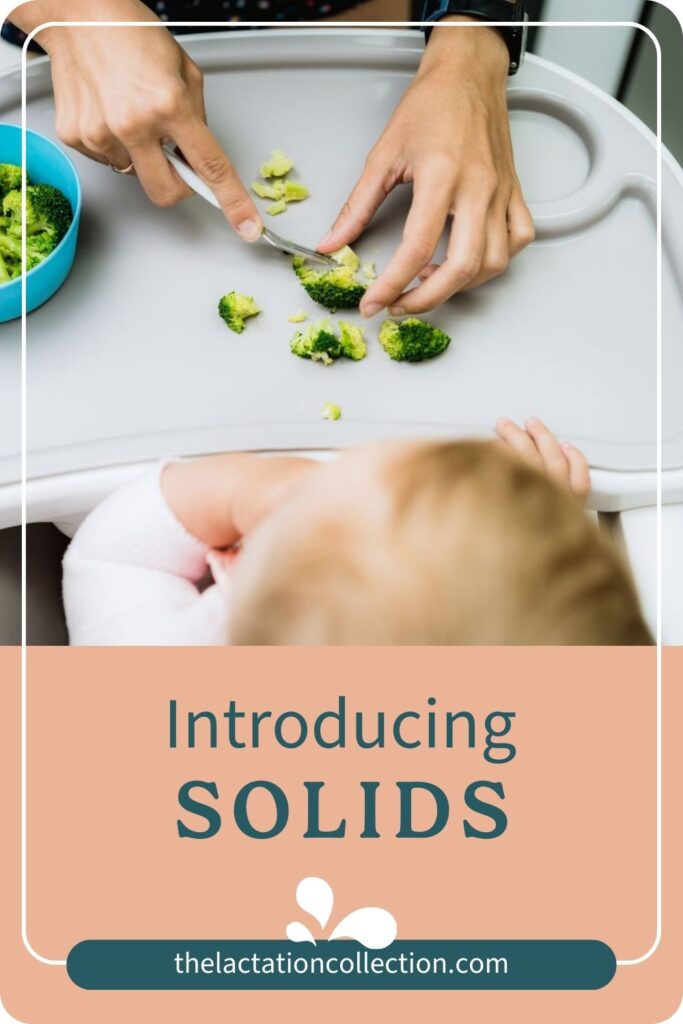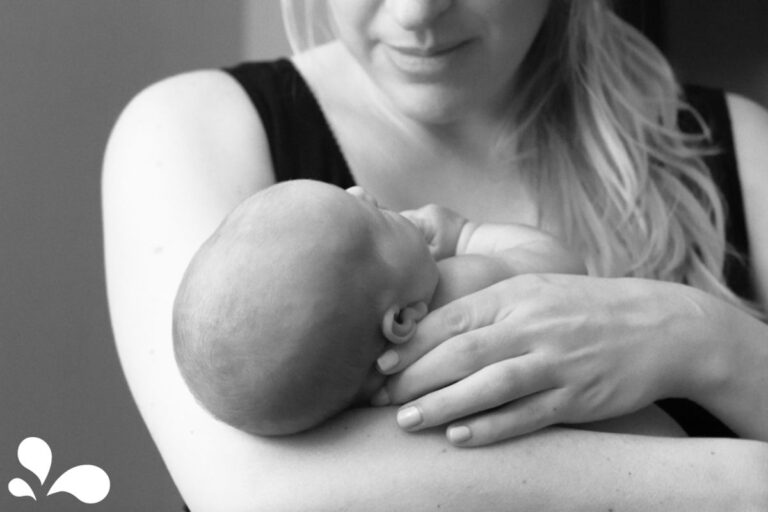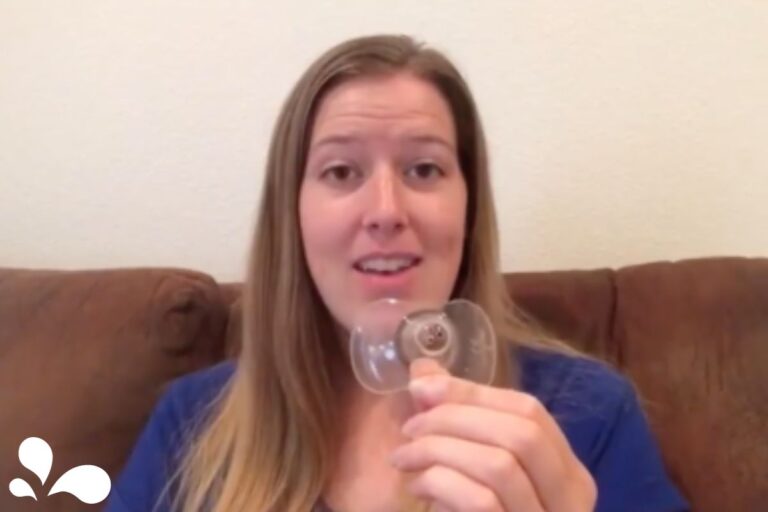Signs That Your Baby Might be Ready to Eat Solid Foods
Hey Mama! One of the big milestones in your baby’s first year is the introduction of solid foods. But how do you know they’re ready? Here are some signs to look for:
- Baby can sit upright and hold their head up like a little champ.
- Their tongue thrust reflex has disappeared. That means they won’t just push everything out with their tongue.
- They’re getting curious and trying to grab things with a pincer grasp.
- Even without a full set of teeth, they’re using chewing motions.

Balancing Breastmilk and Solids
Remember, for the first several months, your baby’s primary nutrition will still come from breastmilk. It’s still their superfood 😉
- Breastmilk first: Offer milk before the solid food.
- Continue to breastfeed on demand. Aim for at least 8 times a day. If you’re pumping, the magic number is 24-32 ounces daily.
- If you’ve noticed your baby wanting to comfort nurse more as they become mobile, that’s normal and should be encouraged.
If your baby doesn’t seem interested in the solids you offer, that’s okay. It can take a while for them to get used to this new culinary world. So, don’t worry if they eat less or show no interest at times; just keep offering.
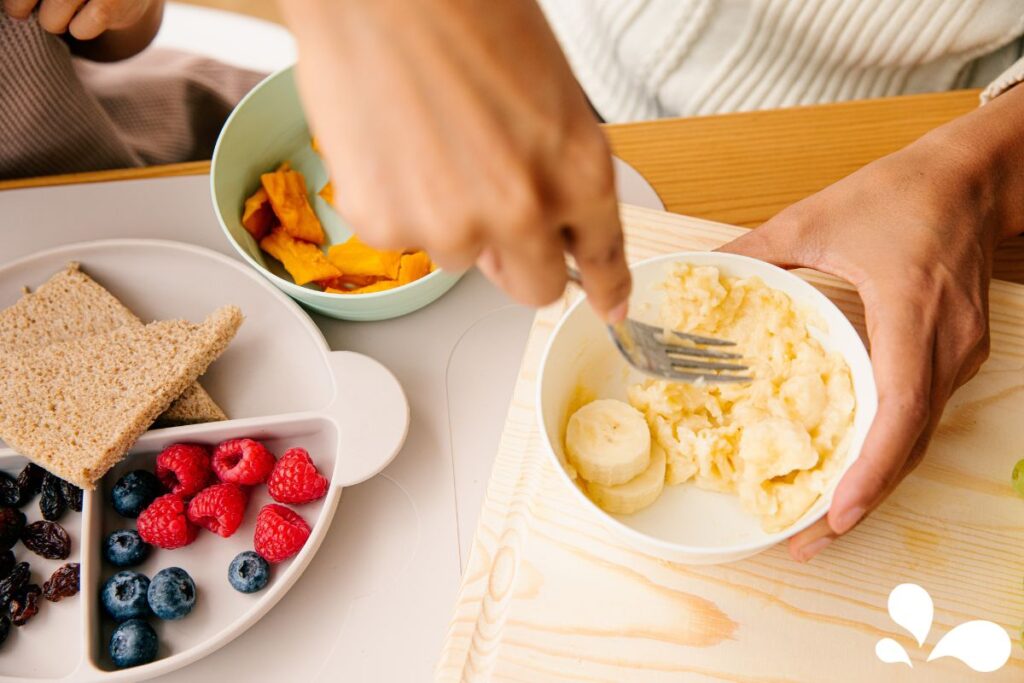
Baby’s Eating Schedule: Growing and Evolving
When your baby is between 6-8 months, mealtimes are more about exploring flavors and textures than how much they eat. A couple of meals a day, each about two to four tablespoons, will do.
As they grow, from 8-12 months, it’s a great time to establish a routine. Washing hands, sitting down for meals, and trying to eat around the same time – it’s all part of the learning process. And guess what? Their tastes might change daily. One day they love carrots, the next day they’re pushing them away. It’s all part of the adventure.
What’s Baby-Led Feeding?
You might have heard of baby-led feeding. It’s where infants take charge of their eating from the get-go. Put some manageable-sized food items in front of them, and let them explore. This method believes babies know when they’re hungry or full. Plus, it’s an excellent way for them to learn self-regulation. Think of it as an early step towards developing healthy eating habits.
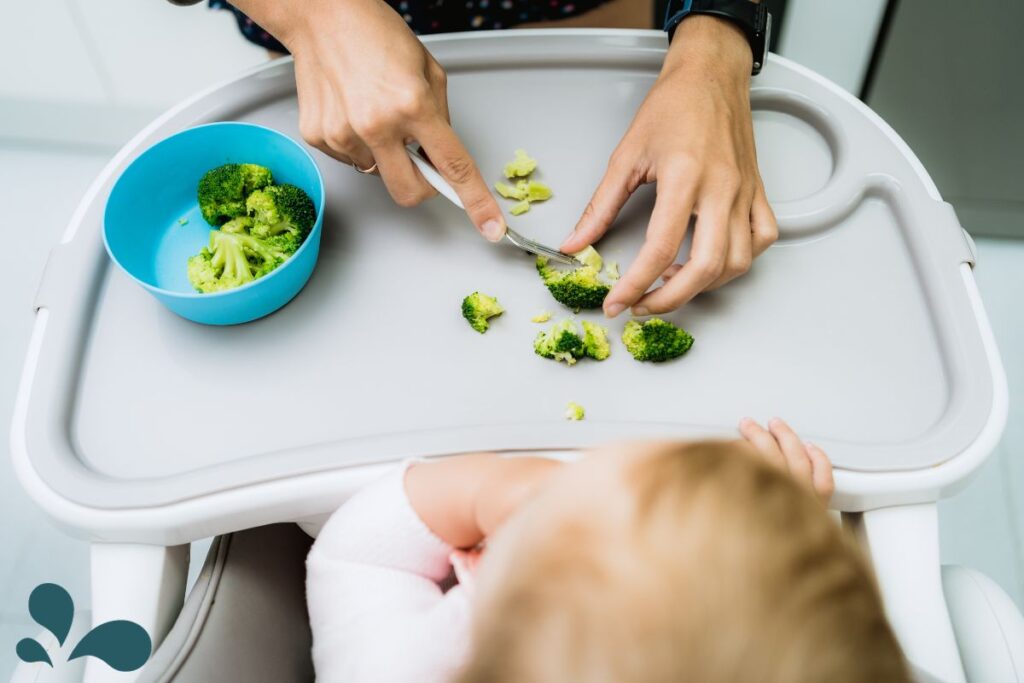
First Foods and Nutrition
Choosing the right first foods is a mix of fun and responsibility. Here are some pointers:
- Fruits and Vegetables: Fresh or frozen, avoid additives, and make sure they’re ripe.
- Meat and Fish: Skip the fried stuff. Ensure they’re well-cooked, and don’t forget to remove any bones or skin.
- Grains: Whole grains are your friends. They pack more nutrients.
- Spices and Herbs: A pinch of variety can be beneficial. Introducing diverse flavors can help your baby develop a versatile palate.
For a detailed breakdown of foods suitable for different age groups and allergy-related info, check out this comprehensive First Foods Database.
Safety First – Foods to Avoid and Choking Hazards
While introducing new foods is exciting, safety should always come first. Some foods, like processed items, honey for babies under 12 months, or raw eggs, should be avoided.
Be watchful of potential choking hazards like whole grapes or uncooked hard fruits or veggies. Always remember to have your baby sit upright when eating and never leave them unsupervised. A gagging reflex is natural and doesn’t always mean they’re choking.

Tips for Success
Every baby is unique, and their readiness for solids can vary. So, patience is key. Here are some quick tips to keep in mind:
- Try giving your baby the same food your family’s having (with necessary tweaks, of course).
- It’s okay if they reject a new flavor at first. Keep introducing it in different ways.
- Let them lead. Let them decide what to try. Their curiosity will surprise you.
- Remember, hungry babies can get cranky. So, don’t wait too long between meals.
- And if all else fails, a naked baby is the easiest to clean up.
If your baby seems hesitant with solids, it’s alright to take a step back and try again later. Keep up with the breastfeeding and ensure they’re getting all the nutrition they need.
Expect Changes in the Diaper: Yep, We’re Talking Poop!
You’ve probably become something of an expert on baby poop by now—its colors, its consistency, even its smell. But brace yourself, mama, because introducing solids is a game-changer in the diaper department.
On a milk-only diet, your baby’s poop has probably been fairly predictable—soft and relatively easy to clean. As you introduce solids, you’ll notice some…changes:
- Color: From vibrant shades of green to even some surprising hues like orange, the color spectrum will broaden.
- Texture: It’s going to get chunkier, especially as your little one starts consuming more complex foods like fruits and grains.
- Smell: Yep, you guessed it. The smell will change, often becoming more pungent due to the different types of foods being digested.
These changes are perfectly normal as your baby’s digestive system adapts to processing different kinds of nutrients from solid foods. However, if you notice any signs of a possible allergy—like mucus, blood, or an extremely foul smell—don’t hesitate to consult your pediatrician.
So yes, the poop is going to get real, but hey, you’ve got this, mama!
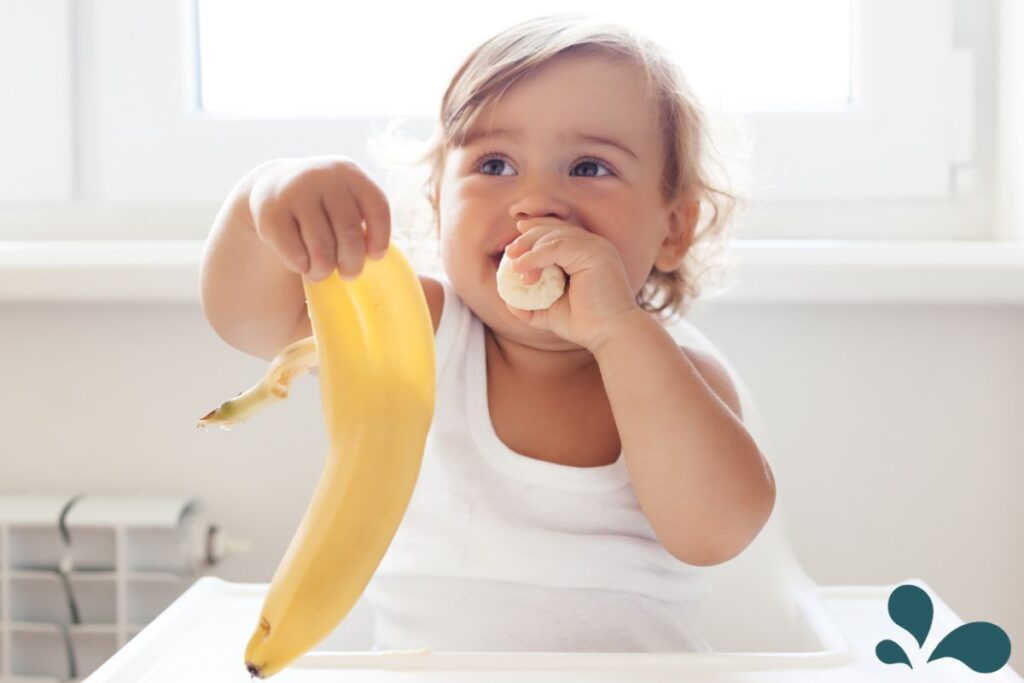
Constipation Alert: A Common Hurdle
New food experiences aren’t just a big deal for your baby’s palate; they can also impact their little digestive systems in ways you might not expect. One of the most common issues that new mamas face during this transition is constipation.
Why Does Constipation Happen?
The introduction of solids means that your baby’s digestive system is processing different types of nutrients, some of which are harder to digest than the milk they’re used to. Foods like rice cereal, bananas, and cooked carrots are often the culprits.
Signs to Look For
If your little one is having fewer bowel movements than usual, or if their poop becomes hard and difficult to pass, you might be dealing with constipation.
What Can You Do?
- Hydration: Make sure your baby is still drinking plenty of breastmilk or formula, as hydration can help soften stool.
- Fiber-Rich Foods: Introduce foods like pureed prunes, peaches, or pears that can naturally help to regulate their digestive system.
- Movement: Sometimes a little physical activity like leg bicycles can help get things moving for your baby.
- Consult your pediatrician: If constipation becomes a persistent issue, it’s a good idea to consult with your pediatrician for a treatment plan.
Being aware of this common issue can help you navigate the introduction of solids more smoothly. And hey, every challenge is a learning opportunity, both for you and your baby. So keep those wet wipes handy, mama; you’re doing great!
